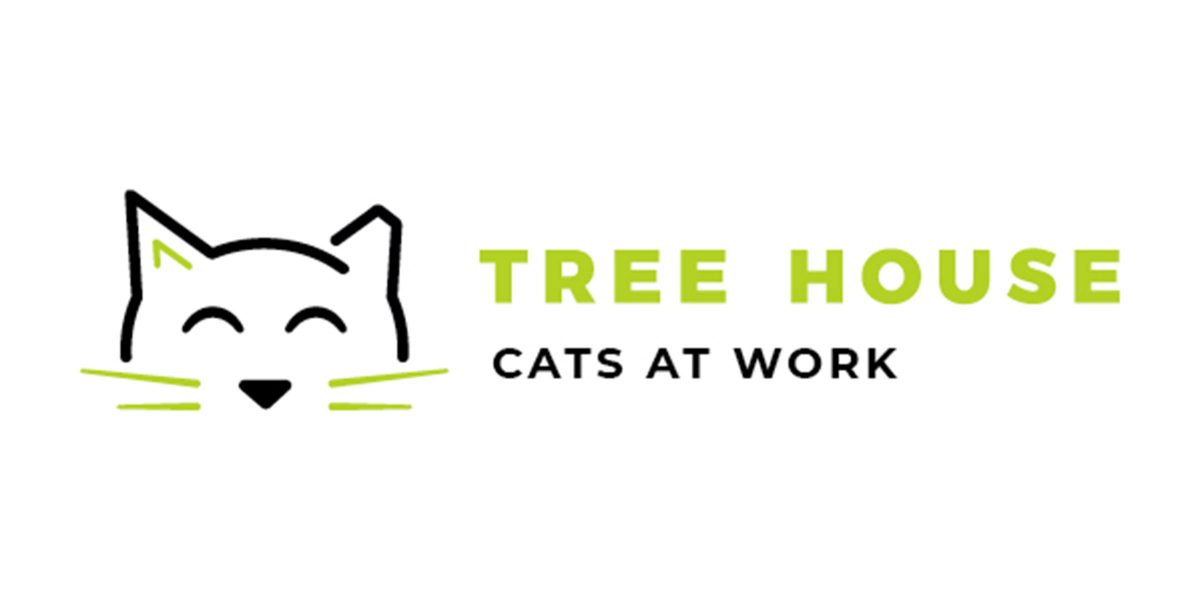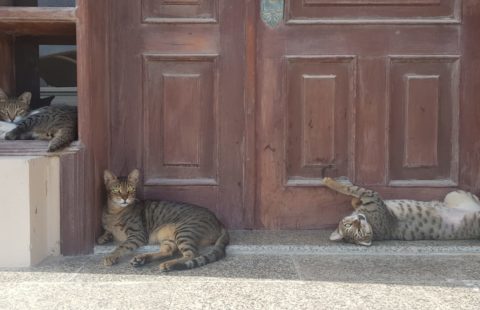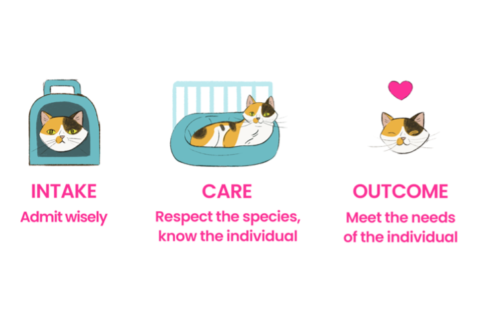This item was in the Guardian newspaper back in May and caught my eye whilst in the midst of testing our Becoming a Cat Friendly Homing Centre Programme.
Many of the organisations taking part were focussing on helping their inbetweener cats find alternative lifestyles, such as with farms and stables, and here was a great example of someone doing this at scale in Chicago. I contacted Tree House who were the organisation running the scheme and spoke to Chris who is their marketing and community relations manager.
Tree House operates what it calls ‘socially conscious sheltering community framework’, and works to match cats by addressing their needs and those of the communities they are placed in. They are also great advocates of collaborative working with other organisations, both locally and nationally in the USA.
When I spoke with Chris we talked about the work Tree House had done over the years to promote TNR to manage the cat population and develop a committed group of colony caretakers. They have now become great advocates for community cats and help to convince the public that cats can live happy lives outside the traditional domestic pet setting.
When Chicago’s rodent population became a serious issue for the community it was an ideal opportunity to offer the environmentally friendly feline control solution. Through their TNR programme they often had cats that had to be relocated from their original colony, which may be being redeveloped for example. Tree House have been inundated with requests and have currently closed applications as there are more jobs than cat applicants! There is a lot of planning before the cats arrive – the environment needs to be stable and someone needs to be available to feed and supervise the cats every day. The long-term nature of the relationship is stressed and the placement is treated as an adoption. After a site survey winter shelters are provided and a secure area set up for the 3 week acclimatisation period. A team member helps with settling in the cats (usually in groups of 3-6) and continues to provide ongoing support.

A winter shelter being prepared
One of the key elements that Chris emphasised was communication and providing people with the right resources. There is constant communication in the early stages with information being provided little and often at each point. The new caretakers are advised what to expect and well supported for the first few months. Feedback has been very positive from those taking the cats and they have found that in addition to pest controllers the cats are a great addition to their community. Many have found jobs at breweries because of the devastating impact rats can have on their business, but are also working in barns, factories, warehouses and people’s backyards. The cats are often to be seen wandering around meeting and greeting from a distance, and the next step is to promote the many roles that working cats can have beyond rodent control. Fortunately for the cats, Chicago law prevents the use of toxic pesticides to kill rodents.

A cat involved in the project
There has been some negative commentary – for example people who are convinced that cats should live indoors or that any sign of sociability means a cat must be adopted as a pet. This is of course a much wider international issue for public education to promote the needs of the inbetweener cat – those cats that have some degree of dependence on people but want to engage with them on their own terms. Chris instantly recognised this terminology as describing many of the cats they have been placed in the community. They have found that the increasing number of caretakers as advocates is one of the best ways to inform people, along with lots of stories of happy cats. There are of course many supporters including the veterinary community and the other animal organisations. Having the expert opinion to back up what you are doing is so important when introducing something new and innovative.

A cat involved in the project
We also talked about how important it is for animal welfare staff to have the people skills to engage with their communities and create positive working relationships for the benefit of humans and cats. As an actor by profession, Chris is well qualified in this respect! The advice from Chris is always to find out what the community needs are, as well as what the cats needs are and then try to match them. Imposing solutions for cats that don’t meet people’s needs will never be as successful. The Cats at Work Program is a great example of good community engagement with excellent cat welfare.

A cat involved in the project






